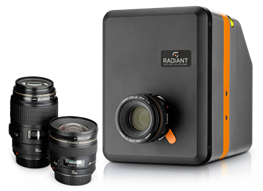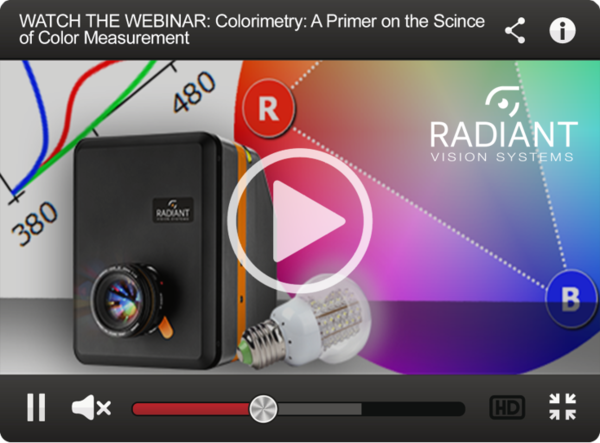Colorimetry: The Science of Measuring Color & Light
What is color? The funny thing is, in a sense, color actually doesn’t exist. What does exist is electromagnetic energy made of photons moving through space. These photons can be described by their energy level or by their wavelength.
A photon’s energy (the amount of electromagnetic energy it carries) is inversely proportional to its wavelength (the distance from one wave peak to the next). Wavelengths are measured in distance; short gamma and X-rays can be just a few nanometers (nm) from peak to peak, and radio waves can be longer than 1 meter.
Looking at the entire spectrum of electromagnetic energy there are very energetic, high-frequency, short-wavelength gamma rays at the “top” of the spectrum on the left, and very low-energy, low-frequency, long wavelength radio waves at the “bottom” end of the spectrum on the right. Frequency refers to the number of waves that pass a given point in space per second; high frequency correlates with high energy.

The electromagnetic spectrum from high-energy, high-frequency, short-wavelength gamma rays to low-energy, low-frequency, long-wavelength radio waves.
On this spectrum there is a small sliver of wavelengths that our human optical system responds to, which we call visible light. The unique way we perceive these wavelengths, based on the response of our visual system, provides what our brains understand as “color.”

The visible light spectrum—the range of wavelengths that can be perceived by the human eye—is just a small sliver of the electromagnetic spectrum, extending from roughly 380 nm - 700 nm.
Colorimetry, the science of color measurement, describes the response of the human eye to different wavelengths and captures color (chromaticity) as a data point. Our eyes also perceive relative brightness of a light source, measured as luminance. Luminance and chromaticity data can be used to guide human-centric design and evaluation of many of today's light-emitting devices, from LED bulbs to big-screen televisions. Product developers can adjust device specifications and performance parameters to elicit an optimal response from the human eye. In other words, they can define what our visual experience of the device should be using scientific measurement data.
This science of colorimetry brings together standard principles, formulas, and functions to create a universal color language. Machines that extract objective and repeatable values from light can be used to perform automated optical metrology and visual quality inspection based on color, ensuring products are designed and manufactured to precise visual performance specifications.
Called colorimeters, these machines use scientific optical filters and calibrations that ensure measurement according to colorimetric principles. Colorimeters enable manufacturers to best assess the visual quality of displays, illuminated components, and light sources as they are actually seen and experienced by users.

The Radiant ProMetric® I Imaging Colorimeter measures precise values of brightness (luminance) and color (chromaticity) enable manufacturers to ensure the intended performance of devices.
To learn more about how human perception of color has been studied and quantified, watch the recent webinar (free with registration) hosted by Photonics Media as part of the 2021 Photonics Spectra Conference. In it, I discuss the basic principles of colorimetry and explain how it is applied for quality control of today’s light and display devices. Topics covered include:
- Human visual perception of “color” and the spectral power distribution (SPD)
- The development of the CIE color space and how to use CIE functions and formula to quantify color as a chromaticity value
- How scientific instruments apply these principles for automated color measurement and visual inspection

Join Mailing List
Stay up to date on our latest products, blog content, and events.
Join our Mailing List
